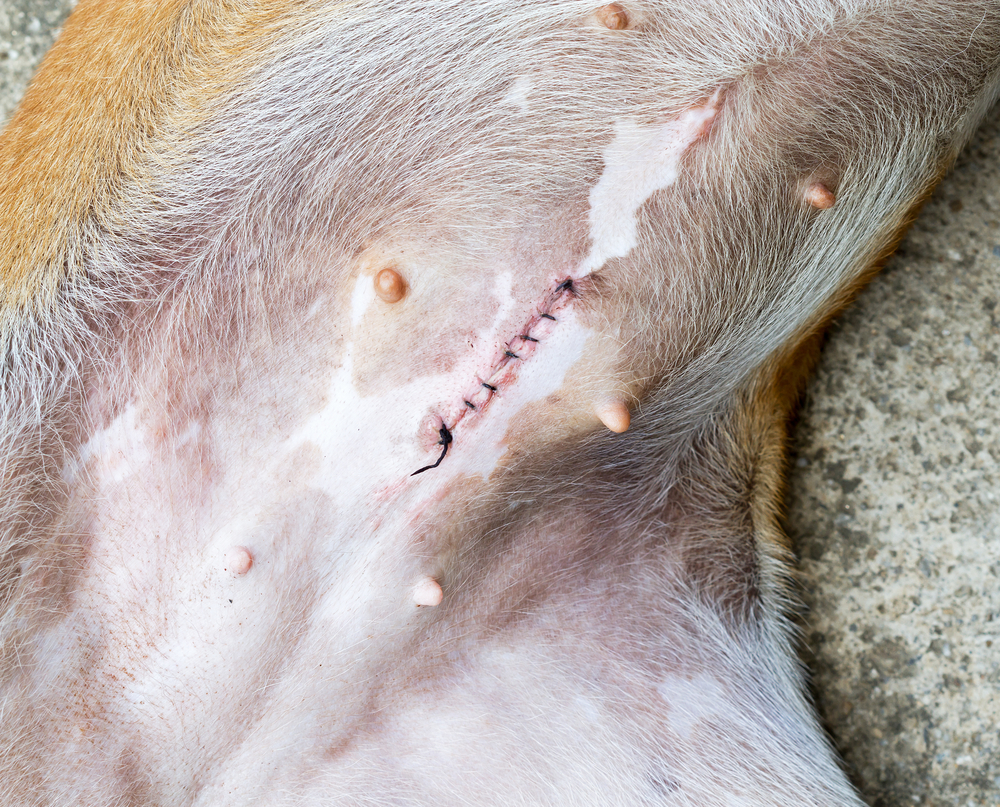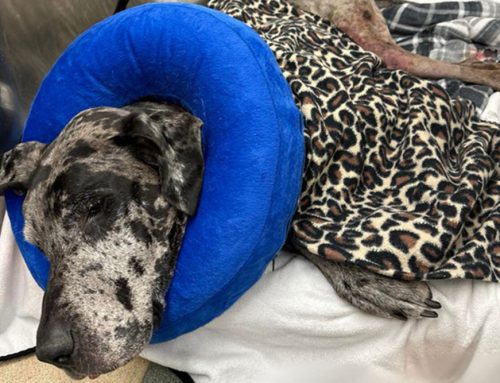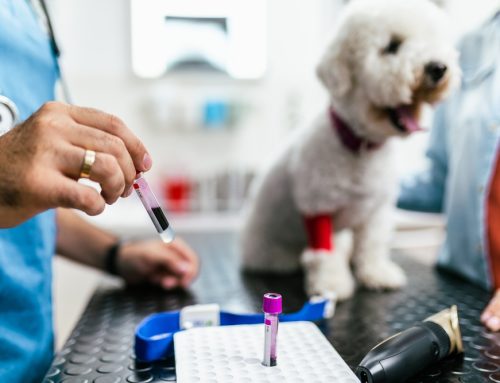Pyometra is one of the most common reproductive emergencies affecting pets, and can have life-threatening consequences. Our Marcy Veterinary Clinic team wants to provide information about pyometra and explain how you can protect your four-legged family member.
Pet pyometra basics
Pyometra—Latin for “pus-uterus”—is a uterine infection that results from hormonal changes in the female pet’s reproductive tract. Four factors contribute to pyometra:
- Cystic endometrial hyperplasia — After a pet has been in heat, their progesterone levels remain elevated for up to two months, causing the uterine lining to thicken in preparation for pregnancy. If pregnancy does not occur for several heat cycles, the uterine lining continues to thicken, and causes cystic endometrial hyperplasia, where cysts form inside the uterine tissue, and associated fluid secretions create an ideal environment for bacterial infection.
- Abnormal uterine contraction — The thickened uterine wall and high progesterone levels inhibit the uterine muscles from contracting normally and prevent bacteria and accumulated fluids from being expelled.
- Decreased protection — When a pet is in heat, white blood cells (WBCs) that normally protect against infection are inhibited from entering the uterus, so that sperm can safely enter the female’s reproductive tract, which provides less protection against infection.
- Open cervix — The cervix remains tightly closed, except when a pet is in heat. During this part of a female pet’s cycle, the structure relaxes to allow sperm to enter the uterus, but bacteria also can enter. Bacteria most commonly cultured from uterine infections are pathogens, such as Escherichia coli, that are commonly found in the intestine and vagina.
Pet pyometra signs
Pet pyometra signs depend on whether the pet’s cervix remains open.
- Open cervix — If the cervix is open, the pet will typically have a purulent or bloody vaginal discharge. Fever, lethargy, and anorexia may be present.
- Closed cervix — If the cervix is closed, the pus collects inside the uterus, and the bacteria produce toxins that enter the pet’s bloodstream and rapidly cause extreme illness. Signs include fever, depression, anorexia, vomiting, diarrhea, and increased thirst and urination.
Pet pyometra diagnosis
Pyometra should be considered in any intact sick female pet. Diagnostics include:
- Physical examination — Our veterinary team performs a thorough physical examination, noting signs such as vaginal discharge and abdominal distention.
- Blood work — Our veterinary team performs a complete blood count and a biochemistry profile to assess your pet’s overall health.
- X-rays — We take abdominal X-rays to determine if your pet’s uterus is fluid filled.
- Ultrasound — An ultrasound can help measure uterine wall thickness and detect fluid accumulation in the uterus.
- Vaginal culture — We will take a vaginal culture to determine the causative pathogen, and direct antibiotic treatment.
Pet pyometra treatment
Pyometra is a veterinary emergency, and affected pets require rapid intervention to prevent overwhelming infection and death. After stabilizing the pet’s condition, treatment options include:
- Surgery — The treatment of choice for most pets is an ovariohysterectomy to remove the pet’s ovaries and infected uterus. This procedure is more complicated than a typical spay procedure since the pet is usually extremely ill, and they may need hospitalization for several days, as well as systemic antibiotics for about two weeks after surgery. Prognosis for survival after an ovariohysterectomy is 80% to 100%, if the abdomen is not contaminated and systemic infection is effectively managed. An ovariohysterectomy also prevents recurrence.
- Prostaglandins — For valuable breeding females, a medical approach may be attempted, but success rates are unpredictable and complications can occur. Prostaglandins are hormones that lower progesterone levels in the blood, relax the cervix, and cause uterine contraction. Factors to consider before choosing prostaglandin treatment for your pet include:
-
- Your pet will show no clinical improvement for about 48 hours, and severely ill pets are not good candidates.
- Prostaglandins cause side effects, including restlessness, vomiting, diarrhea, and abdominal pain that can increase your pet’s distress.
- Since prostaglandins cause the uterus to contract, the uterus can rupture if the cervix doesn’t relax enough, and an infection that contaminates the pet’s abdominal cavity is a severe, life-threatening situation.
Pet pyometra prevention

The only way to protect your pet from pyometra is to have them spayed. Female cats should be spayed before their first heat cycle, which occurs around 5 months of age, and female dogs should be spayed between 5 and 15 months of age, depending on their breed and lifestyle. A spay procedure is also recommended to protect older pets from pyometra. Our veterinary professionals can help you determine the appropriate time to spay your female pet.
Pyometra is a serious veterinary emergency, but spaying your pet can protect them from this concerning condition. If you would like your pet spayed for their protection, contact our Marcy Veterinary Clinic team to schedule an appointment.








Leave A Comment